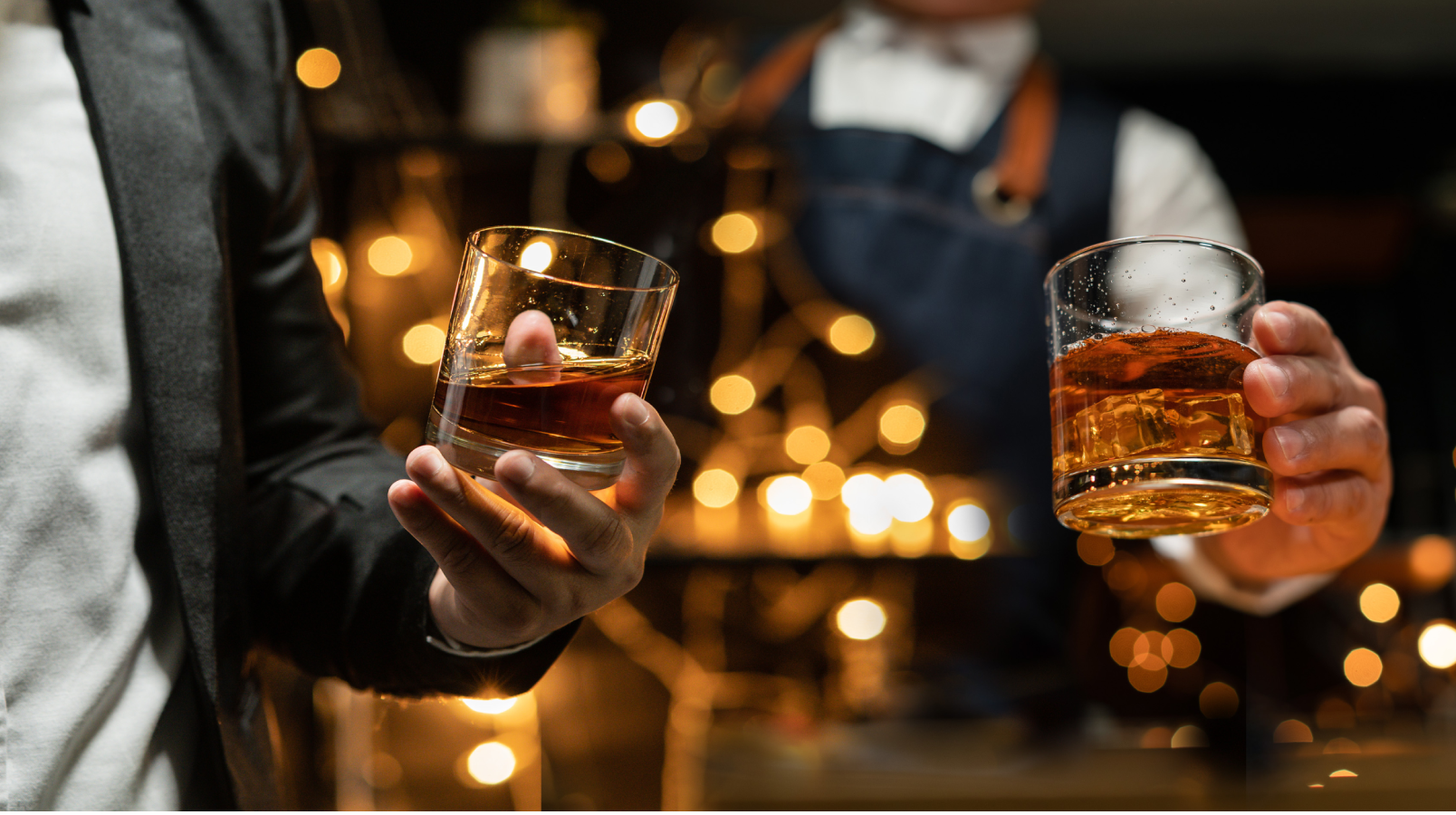Bourbon is one of the most popular and versatile spirits in the world, with a rich history and a distinctive flavour profile. In this blog post, we will explore some of the best drinks to make with bourbon, and share some tips on how to elevate your mixology skills with this great American whiskey.
What makes bourbon so adaptable and diverse as a cocktail ingredient?
We asked WSET Spirits Business Development Manager Charlie McCarthy, to share his insights on the production and maturation of bourbon, and how they affect its flavour and character. He explained that there are many reasons why bourbon is so versatile as a cocktail spirit. “Because of its low distillation strength, it carries a lot of aromatic intensity, which means it stands up well when mixed with other robust ingredients like in a Boulevardier. The different proportions of grains used across bourbon mash bills means that bartenders who understand their bourbons have a very broad palate of flavours and textures to select from when making classic cocktails. And the impact of sour mash (aka back set) and the various proprietary yeast strains produces a wonderful selection of fruity aromas from fermentation to inspire playful new drinks design.”
Charlie also pointed out that the ageing process of bourbon adds another layer of complexity and variety to the spirit. “Because every bourbon must be aged in new charred oak, it could be tempting to assume that the wood influence would dominate. But bourbon aficionados know that once you factor in how that new oak balances out the robust texture of the white dog (new make spirit) plus the array of choices that can be made from char levels to barrel placement in the rick house, the resulting variety in the category makes bourbon an ideal spirit for mixing.”
With this in mind, we take a look at five classic cocktails that bring out the very best in this legendary whiskey style.
Five Classic Bourbon Cocktails
Mint Julep
Chris Dennis - Rum and Whiskies Brand Ambassador, House of Campari Group UK
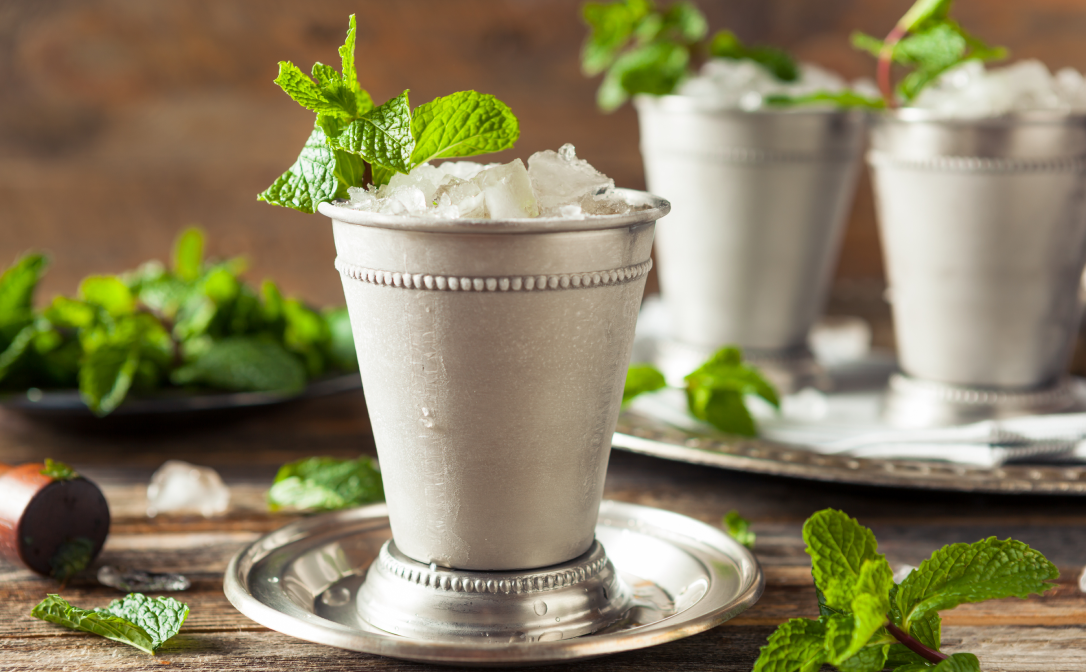
The simple elegance of the Mint Julep was originally assembled for medicinal reasons a long, long way away from the cultural bastion of horse racing in the American South.
The medicinal properties that older, perhaps more exotic iterations of this drink evolved into something soothing for the aches and pains of hired hands labouring on horse farms and the wider industry around racing in 1800s America.
This consumption led to one of the most unique codependent relationships in modern cocktail lore; the Mint Julep and Kentucky Derby. Over 100k juleps are served in the blistering heat of the derby and there is some guidance in the way they are drunk we can take into consideration here; short, clean and cold.
At its heart, this is a drink of three stars; bourbon, mint (good mint if you please) and sugar. As a secondary factor but just as important as these core ingredients, the temperature has to be as cold as possible, it is after all, hot out here.
Ingredients:
- 60ml 50% ABV or thereabouts Bourbon (e.g. Bottled-in-Bond)
- 15ml sugar syrup
- 5 - 6 fresh mint leaves (plus a sprig for garnish)
- Optional - a dash of water or bitters
Method:
Let the mint and bourbon make friends in a copper cup (stainless steel will also do fine). Add some equal parts golden and white caster sugar syrup (to taste). Muddle together and churn with shaved or crushed ice until the leaves begin to break down.
The bourbon here is the star of the show, those rich white oak notes tempering nicely to the chill and mint to really make this a rounded, thirst-quenching little number.
A dash of water or bitters is optional, but not really needed if you use a good bourbon well.
Old Fashioned
Mikey Pendergast, Whisk(e)y Ambassador at Speciality Brands
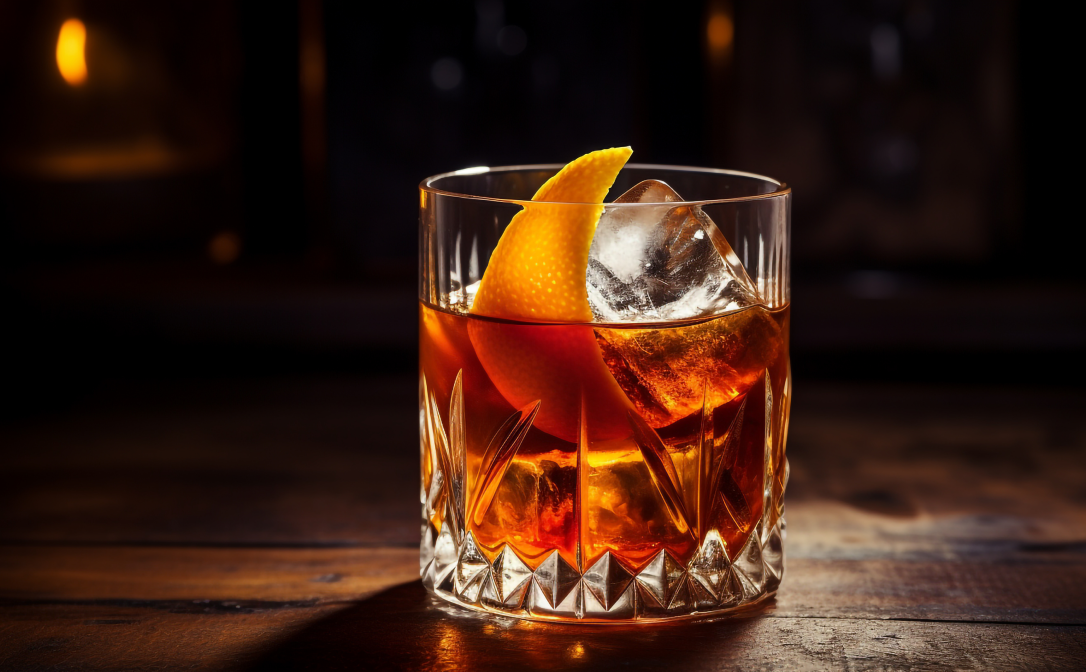
The Old Fashioned is one of the oldest and most revered cocktails in history, dating back to the early 19th century.
According Mikey Pendergast, Whisk(e)y Ambassador at Speciality Brands the cocktail is one of the all-time great classic drinks, “owing its timelessness to a characteristic it shares with other great phenomena such as pizza; even “bad” Old Fashioneds are good.”
“Good ones can be transcendent; complexity can be teased out with myriad ingredients and substitutions, but no matter how you throw it together it will bring a smile to your face.”
“With each ingredient providing something for enjoyment, one of my favourite things about this drink is that no component has to compete with another. Bitters tend to season and spice the alcohol, sugar enriches the mouthfeel, and the whiskey brings a bite, complexity and aroma.”
Ingredients:
- 50ml Bourbon
- 5 dashes Angostura Bitters
- 1 teaspoon Maple Syrup
- Orange zest for garnish
Method:
Put all your ingredients into a rocks glass full of ice, stir it with your finger and zest a big piece of orange peel over it. The quality of the Bourbon does all the heavy lifting. Although it seems ham-handed and almost disrespectfully simple, this recipe will create a drink the way it should be presented in a bar.
Your first sip will be big and chewy, all the vanillins and tannins will sing throughout your palate, and you probably won’t even notice the ABV.
Halfway through the drink it will have diluted to the perfect level, ensuring the longest possible time for the sipping of the ideal dilution level.
As you get the last gulp from the glass it will slip into over-dilution, making you long for the strength of your first sip.
New York Sour
Denaya Jones-Reid, Founder of Deestilled
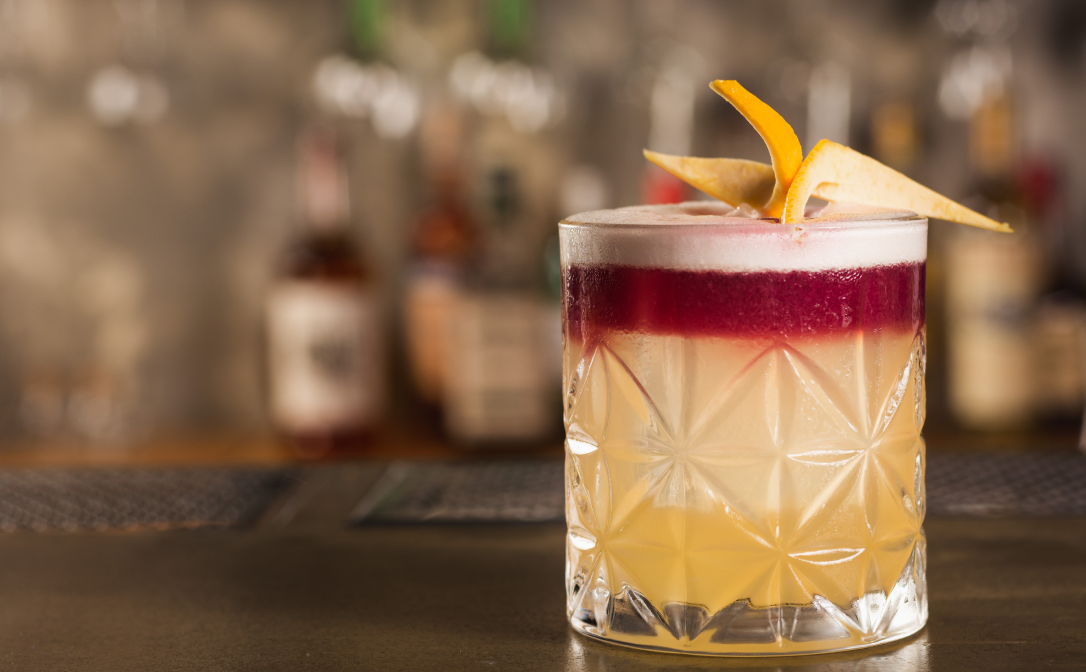
The New York sour is a stunning and delicious drink that combines a whiskey sour with a float of dry red wine, creating a beautiful contrast of colours and flavours. The whiskey sour is a classic cocktail made with whiskey, lemon juice, and sugar (sometimes with an egg white for that frothy texture.
The drink is said to have originated in the late 19th or early 20th century, possibly in Chicago, but it became popular in New York City, hence the name.
Denaya Jones, Founder of Deestilled says, “sours are easily one of my favourite classic cocktails. The customisation possibilities with a sour are endless, which makes them both fun and easy to impress guests with both behind the bar and at home. My tip is to always go for a bourbon that has flavour notes that you love i.e. chocolate, vanilla bean, red fruits, etc.”
Ingredients:
- 50ml high proof bourbon
- 20ml fresh lemon juice
- 20ml rich simple syrup
- Approx 15ml float of Cabernet Sauvignon or Pinot Noir
Method:
Shake the bourbon, fresh lemon juice and simple syrup with ice, strain into your chilled rocks glass, & add fresh ice.
Delicately pour the red wine on backside of a bar spoon or teaspoon, positioned on the inside of your glass to float the wine on top. Serve with a lemon twist if desired.
Boulevardier
Benji Purslow, European Brand Director at Heaven Hill Distillery
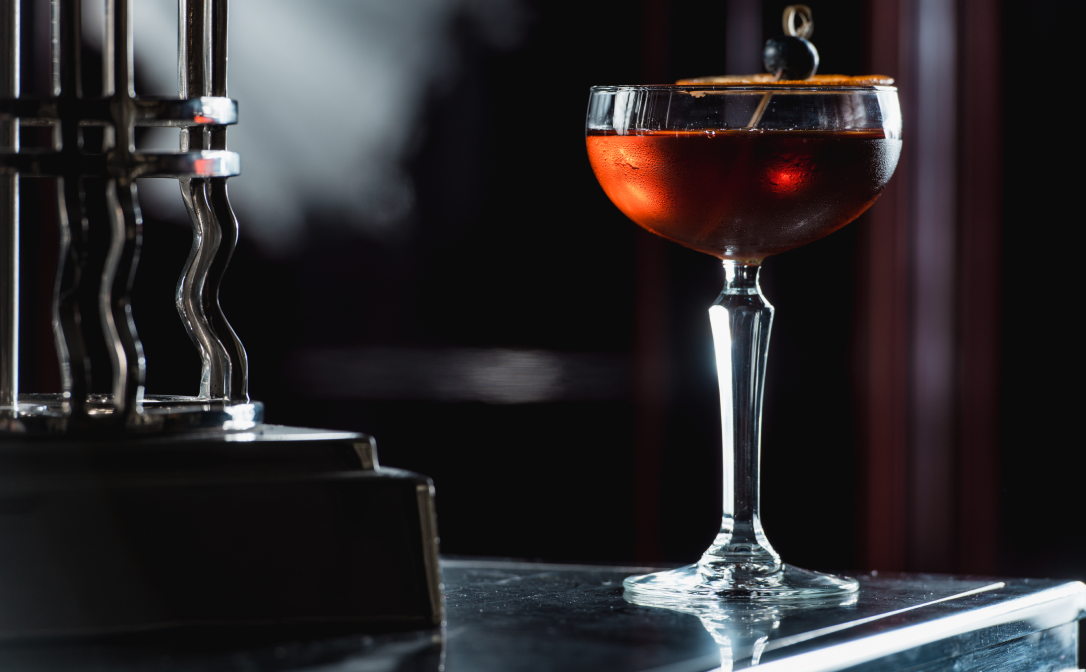
A variation of the negroni (where the gin has been switched for bourbon) - the boulevardier was invented in Paris in the early 1920s by an American journalist, Erskine Gwynne, who named it after his magazine, The Boulevardier. The bourbon creates a warmer and smoother drink that still retains the bittersweet and herbal character of the negroni.
Benji Purslow, European Brand Director at Heaven Hill Distillery says of the Boulevardier, “One of my favourites to drink on a night out, it transforms a negroni into more of a digestiv style drink. The rich vanilla notes of bourbon, work with the caramel and botanicals of the sweet vermouth and the dryness of the Campari. I tend to drink mine straight up as opposed to on the rocks, but either are more than acceptable. I also personally prefer a touch more whiskey than the Campari and sweet vermouth.
“Finally, for me, a bottled-in-bond bourbon (which has to be 50% alcohol), REALLY brings this drink to life...”
Ingredients:
- 35ml bottled-in-bond Bourbon (50% ABV)
- 25ml sweet vermouth
- 25ml Campari
- Optional: a dash of orange bitters to tie it together
Method:
Pour all ingredients into a mixing glass or shaker. Add large handful of ice and stir for approximately 30 seconds. Fine strain into a chilled coupe glass. Garnish with a cherry.
Vieux Carré
Denaya Jones-Reid, Founder of Deestilled
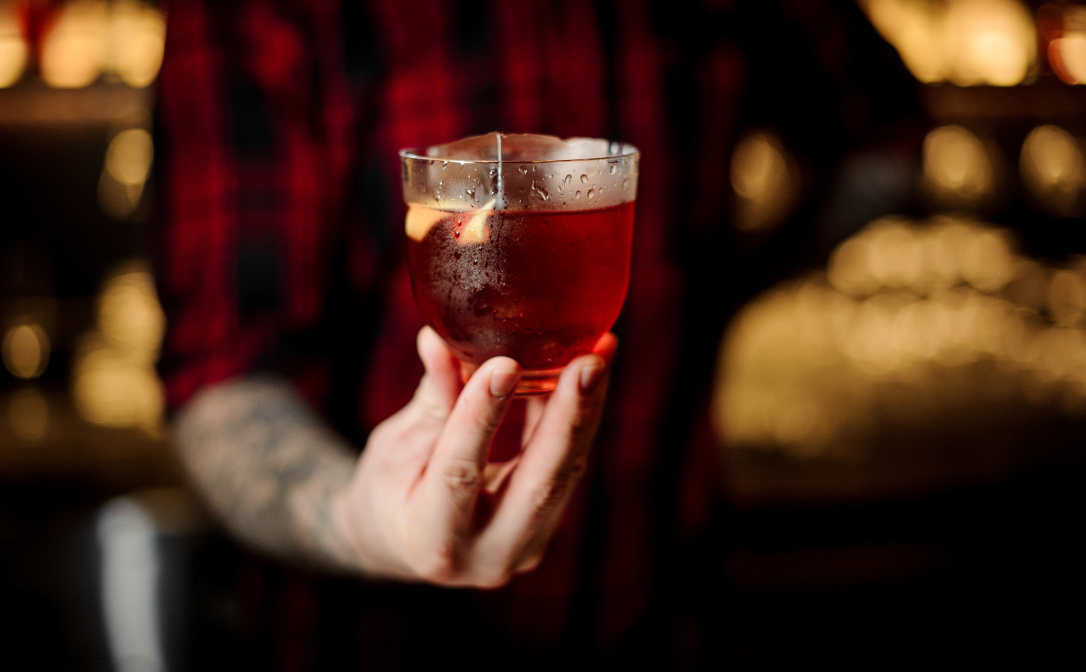
The Vieux Carré is a potent and flavourful drink that pays tribute to the French Quarter of New Orleans, also known as the Vieux Carré, which means “old square” in French. The Vieux Carré was created in 1938 by Walter Bergeron, the head bartender at the Hotel Monteleone’s Carousel Bar, and it features a blend of bourbon (or rye whiskey), cognac, sweet vermouth, Benedictine, and two kinds of bitters. It’s a complex and smooth drink that showcases the spice and warmth of the whiskey, the smoothness and fruitiness of cognac, the sweetness and herbal notes of vermouth and Benedictine, and the bitterness and aroma of the bitters.
According to Denaya Jones, Founder of Deestilled, “the Vieux Carré cocktail is a great way to experiment with flavour. Cognac leans more towards sweeter, fruitier flavour notes, while most ryes (or high-proof bourbons) are known for their spice & herbaceous notes. You can also find expressions of either spirit that lean towards the opposite profile, but it all comes down to preference. Whichever way you choose, finding the balance between these two profiles is key to making the perfect cocktail.”
Ingredients:
- 25ml Bourbon (or rye whiskey)
- 25ml VSOP Cognac
- 25ml Benedictine liqueur
- 2 dashes aromatic bitters
- 2 dashes orange bitters
- Orange zest & cherry garnish
Method:
Stir the bourbon, cognac, Benedictine and bitters in a mixing glass with ice for approximately 20 seconds.
Strain into a chilled coupe or Nick & Nora glass.
Expressed orange zest over glass, and garnish along with cherry.
Bourbon is a versatile and delicious spirit that can be enjoyed in many ways, but especially in cocktails. Whether you are looking for a refreshing, smooth, bittersweet, or complex drink, there is a bourbon cocktail for you.
Learn more about WSET Spirits qualifications here.
For more ideas, read our top tips for making cocktails at home.
This blog post was written by Alex Layton, Head of Brand and Digital Marketing at WSET. Alex is an aficionado of all things bourbon and rye and has been writing about wine, beer and spirits for over a decade. Follow Alex on LinkedIn here.


